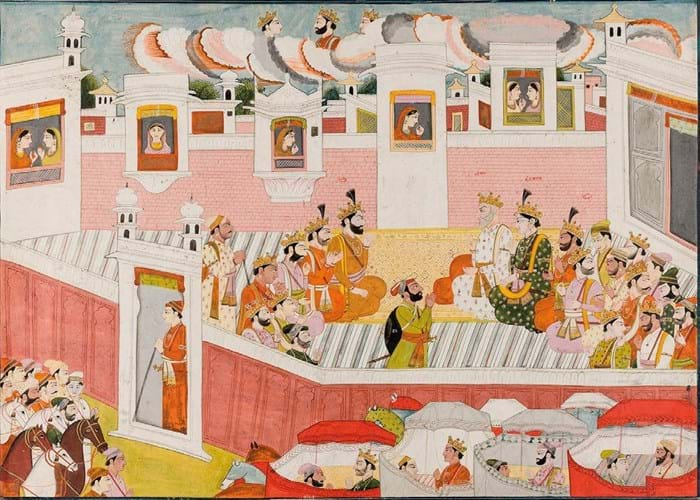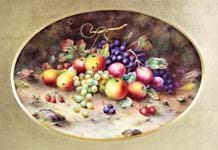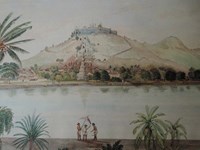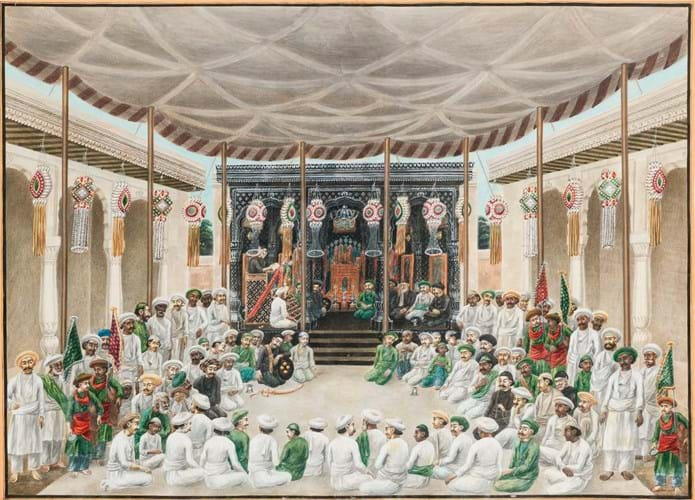
The earliest form of these works can be traced back to the introduction of paper in the sub-continent in the 12th century and they have long been admired in both the East and West for their fluid artistic technique and innate historical interest.
Their values, therefore, are determined by both these strands: quality of execution and stylistic elements on the one hand, and subject matter, age and rarity on the other.
Three other important factors are also worth noting. Unlike much of western art, attributions to specific artists are much less likely to be recorded when it comes to Indian miniatures – often works are ascribed instead to a particular school, princely court or geographical area. But where works can be attributed to a known hand, prices can be very high indeed.
Secondly, and slightly in contradiction to the nomenclature, the size of Indian miniatures can also be significant. Large-scale watercolours are often highly sought after – partly because they are rarer but also because they often depict multiple figures which may allow for a more detailed narrative element. They can also be more striking when hanging on the wall.
Finally, as with all works on paper, condition and market freshness inevitably play a key part in determining demand.
Choice pieces
A recent sale at Olympia Auctions (25% buyer’s premium) in London offered some prominent examples among a group of 28 Indian miniatures.
Consigned from nine different vendors, 18 of the lots sold for a combined £30,520. Significantly, however, the top four went to four different buyers from three regions: India, Europe and the US.
These included a couple of relatively large-scale works with some identifiable features that made them choice pieces for collectors.
One of them offered at the July 14 sale was a depiction of prayers and recitations at the Muharram festival in Patna in northern India, an event where the Muslim population commemorated the death of Imam Hussein at Karbala (680AD).
Dating from c.1820-30, the watercolour was executed on thick paper and measured 16¼ x 22¾in (42 x 58cm). Although the edges were trimmed, was in good condition. It was consigned by a London vendor who had acquired it at Christie’s in 1979.
The image was in keeping with works of Sewak Ram (c.1770-1830), the best known of the group of artists from Murshidabad who moved to Patna in the late 18th century to take advantage of the growing wealth of the city as a trading and manufacturing centre.
Ram produced a series of similarly large works depicting the local life and customs for Lord Minto and Lord Amherst, some of which now be found in the V&A and British Library. His pictures often showed crowds with figures given individualistic treatment as was the case here.
Matthew Barton and Arthur Millner, two of the Olympia Auctions specialists who helped organise the sale, believed this example was “very close” to known works by Ram and, although a full attribution could not be proved, “the association undoubtedly added to the interest”.
Either way, this was a rare work. It was catalogued as ‘Circle of Sewak Ram’ and estimated at £7000-9000. After good competition it was knocked down at £14,000 to the Indian trade.
Even though price comparisons are difficult as records for Ram at auction are few and far between, this looks like a strong price. Another watercolour attributed to Ram showing the Muharram festival sold for $9000 (£5678) at Sotheby’s New York in November 2002.
The market has certainly expanded since the early 2000s and Barton and Millner said there is now “broad international interest in Indian paintings, and the subcontinent in particular is growing as a market”.
Kingly subject
From the same source was another early 19th century work on paper of a coronation scene. The 14in x 20in (36 x 51cm) gouache with gold on paper depicted a group of crowned rulers and noblemen, some of whom were identified in 10 lines of devanagari script on the reverse.
The subject appears be a Hindu epic showing the coronation of King Bhishmak (in a white coat), whose daughter Rukmini married the god Krishna, with his son Rukman at his side (wearing a green coat).
The attribution here could not be narrowed down further than being classified as ‘probably Kangra’ – a school named after the former princely state in the Himalayas which patronised this form of miniature painting. The condition was also not perfect with some rubbing and flaking, particularly around border, but against a relatively attractive £3500-4500 estimate, it sold at £7000 but this time to the European trade.
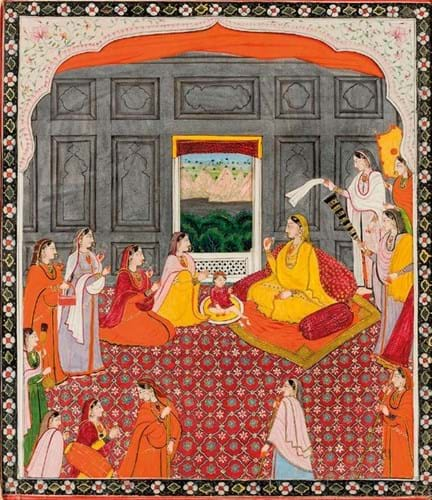
Mother and child in a palace catalogued as ‘probably Kangra, early 19th century’ – £4200 at Olympia Auctions.
A third work from the source was another early 19th century gouache with gold on paper, this time depicting a mother and child with female attendants in a palace. Again a Kangra school scene, it featured an ornate floral border and a mountainous landscape was visible through the window.
Here the bidding surpassed a £2000-300 pitch and it was knocked down at £4200 to a London collector, a decent sum for a Kangra miniature of an unidentified subject.
Intricate brushwork
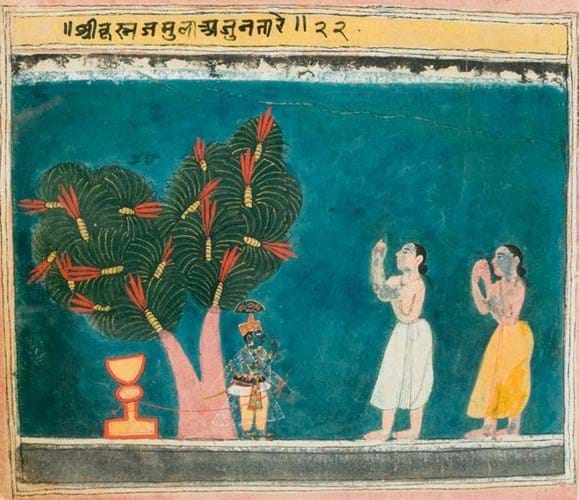
'The infant Krishna with devotees' catalogued as ‘Malwa, mid 17th century’ – £4500 at Olympia Auctions.
One of the works bringing strong competition from a separate source was an earlier miniature of the infant Krishna with devotees. It was probably executed in the mid 17th century in the Malwa region of west-central India where an offshoot of the Rajasthani school had developed its own style of miniature painting with intricate brushwork.
The subject relates to how the young Krishna was tied by his mother to a sturdy mortar and pestle underneath a fruit tree to restrain him from his mischievous behaviour.
The gouache with silver and gold on paper was smaller than the above-mentioned works, measuring 6½ x 7¼in (17 x 19cm), and its condition was also more compromised by flaking and losses.
Nevertheless, the estimate of £600-800 was not deemed excessive for a work by this school of this date and it was bid to £4500, selling to a US collector.
The fact that it had been acquired for £450 at Spink in May 1997 was an indication of the considerable rise in this market due the growing internationalisation of the sector.


